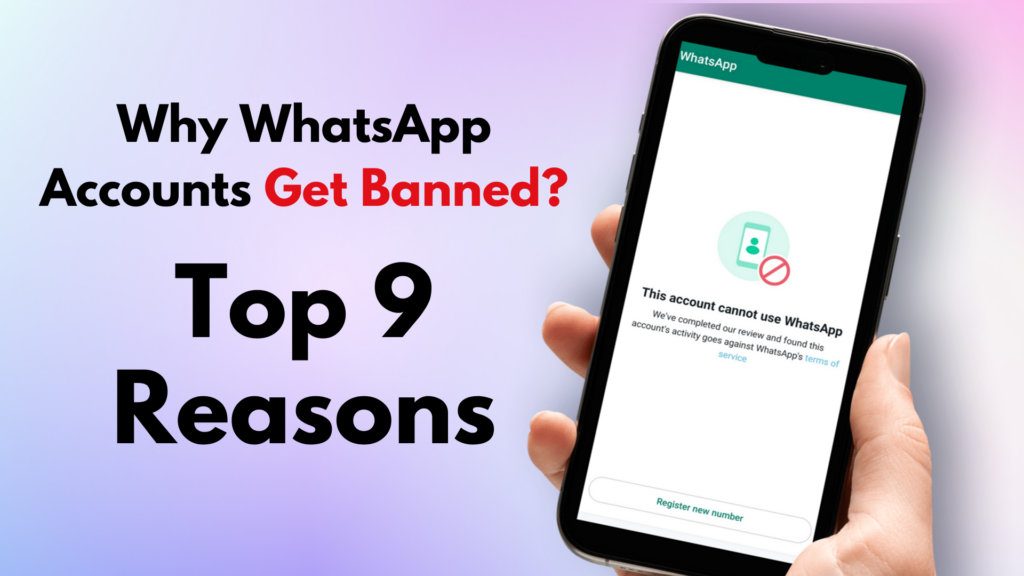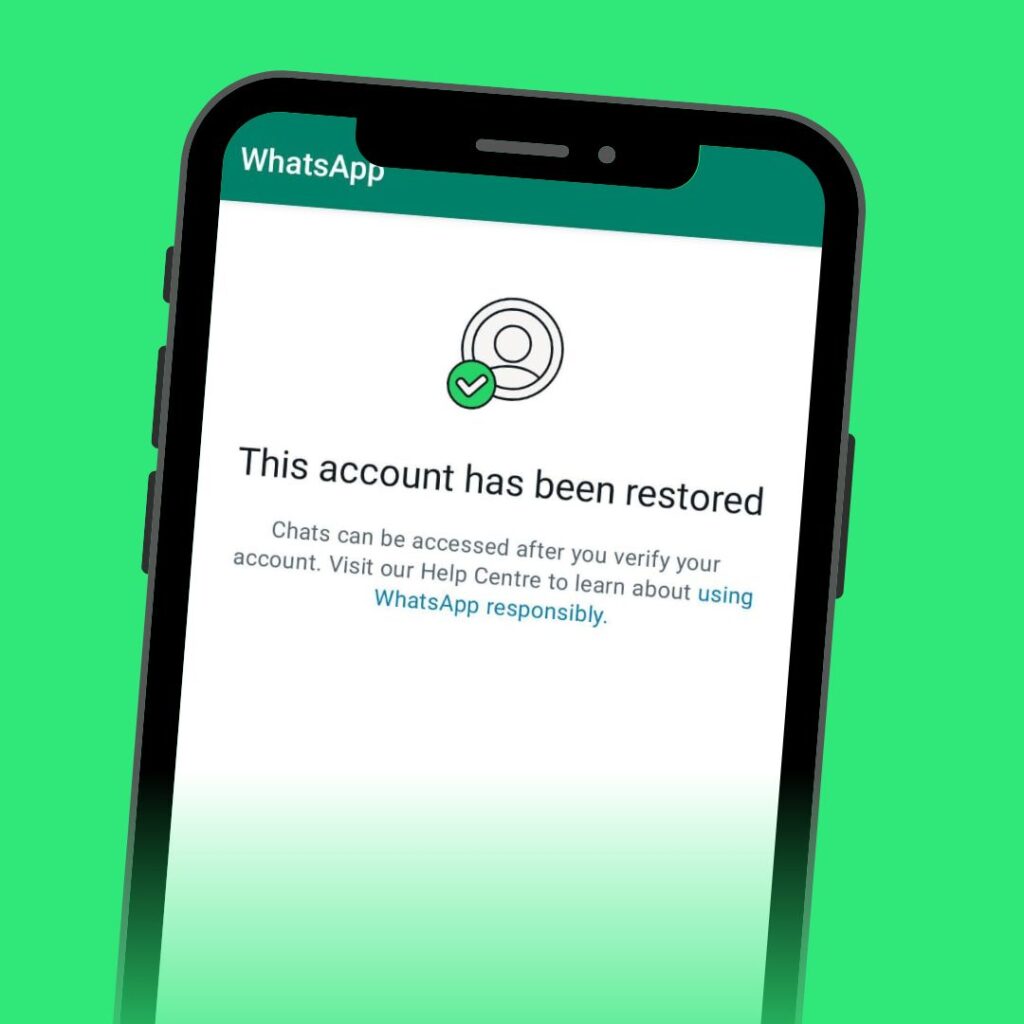Why WhatsApp Accounts Get Banned: Top 9 Reasons

If you’ve ever faced the frustration of why WhatsApp accounts get banned while running a marketing campaign, you’re not alone. Many businesses and marketers struggle with this issue, especially when sending bulk promotional messages or trying to build brand awareness. A sudden ban can easily stall your efforts, leaving you disconnected from your audience and directly affecting your business growth.
But what exactly triggers these bans, and how can you avoid them? In this article, we’ll uncover 9 critical reasons why WhatsApp accounts get banned and offer practical solutions to prevent it. By understanding these key factors and using the right tools, like Saasyto, you can ensure your campaigns run smoothly and completely avoid the headache of an account suspension.
Table of Contents
Toggle1. Sending Identical Messages to Multiple Recipients
One of the main reasons for WhatsApp account ban is sending the same message to multiple recipients. WhatsApp considers this spamming behavior. Spintax can help you avoid this by allowing you to send varied versions of your message. For example, instead of sending “Hello! How are you?” to everyone, Spintax can modify it to “Hey! What’s up?” or “Hi! How’s everything?”.
By creating natural-looking variations, you’ll reduce the chance of your account being flagged as spam. Saasyto provides this Spintax feature, which is crucial to keeping your marketing activities safe.
2. Sending Unpersonalized Messages
Sending unpersonalized or generic bulk messages is one of the reasons why WhatsApp accounts get banned. WhatsApp’s algorithms can detect these messages as spam, which often leads to account suspensions. However, personalized messaging demonstrates that you are engaging directly with users, rather than just sending mass texts.
To prevent this, Saasyto’s Variable feature allows you to personalize your messages by automatically including details like the recipient’s name and other information. This personal touch not only enhances user engagement but also helps you stay compliant with WhatsApp’s marketing rules, avoiding potential bans.
3. Sending Messages to Invalid or Non-WhatsApp Numbers
Another mistake that leads to WhatsApp bans is sending messages to invalid or non-WhatsApp numbers. This can trigger WhatsApp’s spam detection system. To prevent this, you should always validate the numbers before sending messages.
Saasyto’s Number Checker and Filter feature automatically filters out invalid or non-WhatsApp numbers, ensuring your messages only reach active WhatsApp users. This reduces your risk of getting banned while saving time and resources.
4. Sending Too Many Messages in a Short Time
Flooding WhatsApp with a large number of messages in a short period of time can trigger the platform’s spam filters. This is a frequent reason why marketers face account suspensions or bans.
To mitigate this risk, you can use Saasyto’s Anti-Banning Delay Timer. This feature lets you set intervals between messages, such as 90-120 seconds. Adding delays makes your message-sending behavior appear more natural, helping to avoid detection by WhatsApp’s spam filters.
5. Sending High Volume of Messages from One Account
Sending high volumes of marketing messages from a single WhatsApp account in a day can easily get your account banned. WhatsApp monitors account activity, and too many messages from one account are a red flag for spam.
Saasyto’s Account Rotation feature helps resolve this issue by sending your messages through your multiple WhatsApp accounts. This reduces the load on any single account, lowering the risk of a ban while still allowing you to reach your target audience efficiently.
6. Sending Messages Without the ‘Typing’ Indicator
The absence of the ‘Typing’ indicator when sending messages can make your account appear suspicious. Normally, when someone sends a message on WhatsApp, the recipient sees this indicator. However, some third-party tools omit this feature, sending messages instantly without the typing notification, which raises concerns about automated messaging results in WhatsApp Account ban.
Saasyto addresses this by simulating the ‘Typing’ indicator, before your message is sent. This makes the message look more natural, reducing the likelihood of WhatsApp flagging it as bulk messaging.

7. Sending Only Outgoing Messages Without Incoming Ones
Accounts that send only outgoing messages without receiving any replies are often flagged as bots by WhatsApp. The platform looks for natural interactions between users, and the absence of incoming messages is a major red flag.
To solve this, Saasyto offers the WhatsApp Warmer feature, which enables automatic exchanges between your accounts. By registering a set of numbers, you can schedule them to send random messages to each other. This creates the appearance of real conversations, reducing the chances of being banned.
8. Incomplete WhatsApp Business Profile
If you’re using a WhatsApp Business account, completing your profile is crucial. WhatsApp may flag or ban accounts that appear incomplete or unverified. Missing details such as your profile picture, business name, address, or contact information can make your account look suspicious or non-legitimate.
To avoid this, ensure that all sections of your WhatsApp Business profile are filled out accurately. Providing complete and correct information makes it clear that your account is being used for legitimate business purposes.
9. Jumping Straight into Marketing with a New Number
Starting marketing campaigns with a brand-new number immediately can be a big mistake. When a new number sends a high volume of messages right away, WhatsApp may flag it as spam.
The best practice is to warm up new numbers by gradually increasing the number of messages you send. Start by sending messages to about 20 contacts on the first day, and slowly build up your activity over the next few days. This gradual approach makes your messaging behavior seem more natural and reduces the chances of WhatsApp flagging the number.
-
WhatsApp Unban 100% GuaranteedRated 5.00 out of 5
₹999.00


